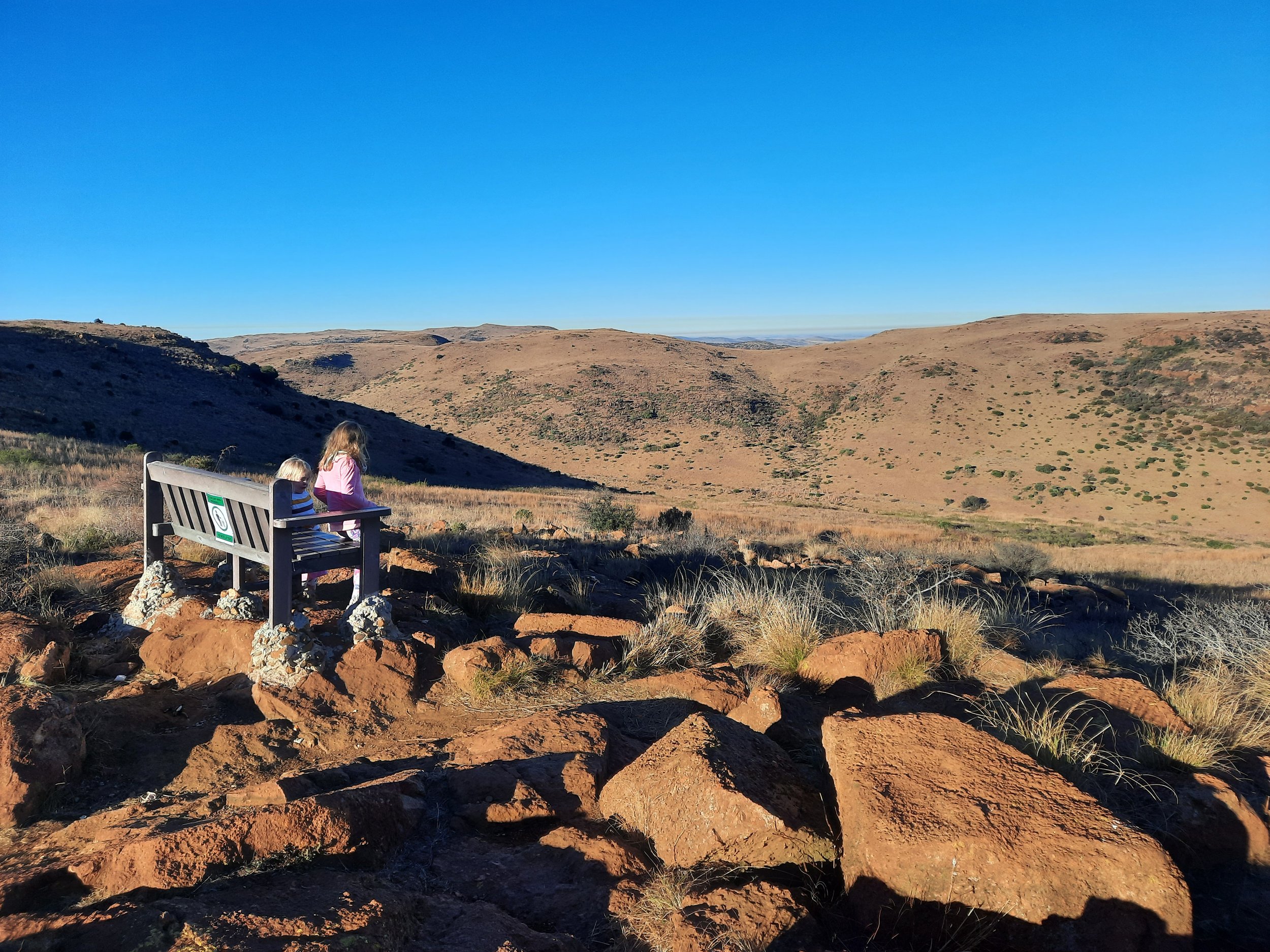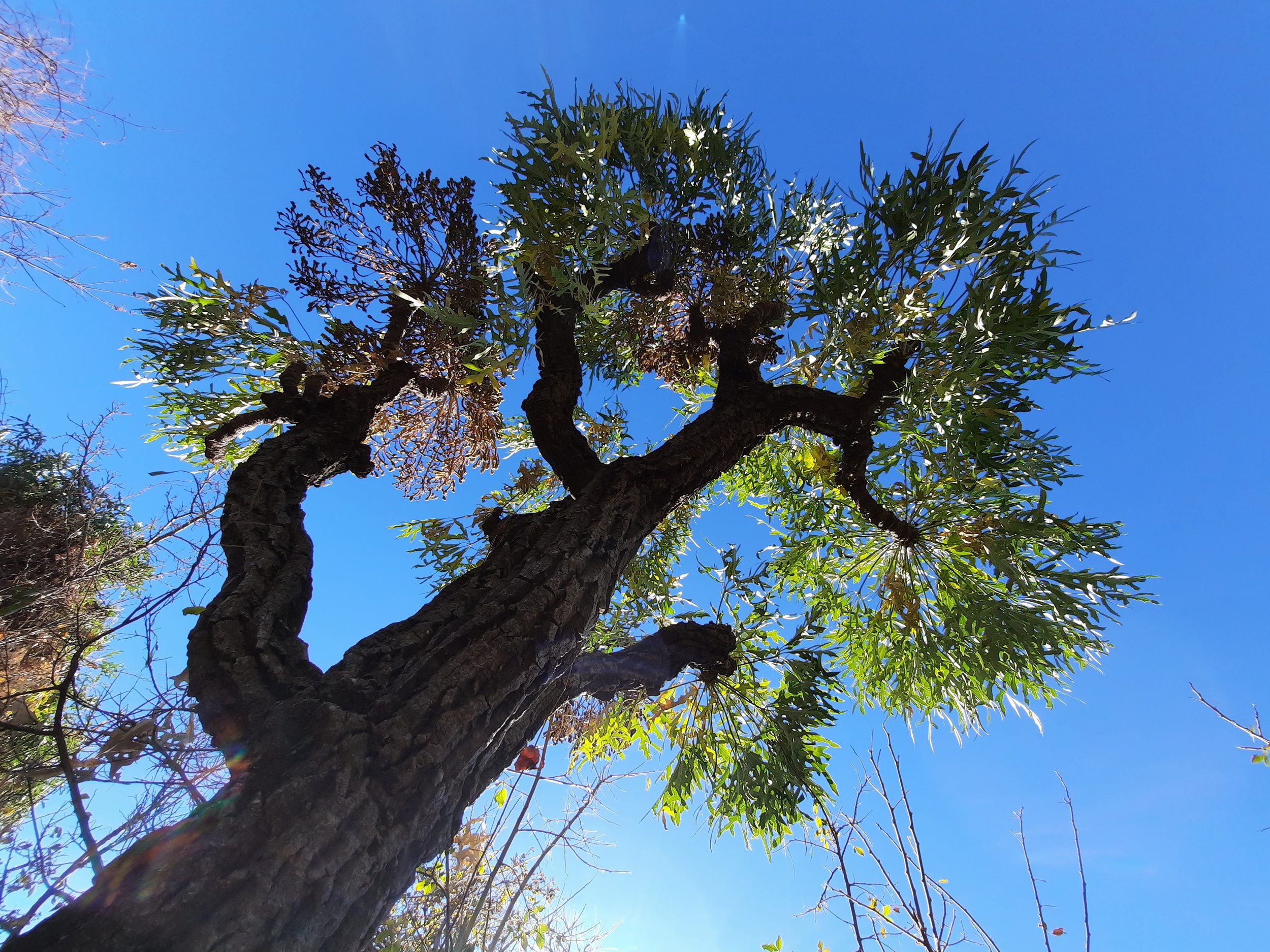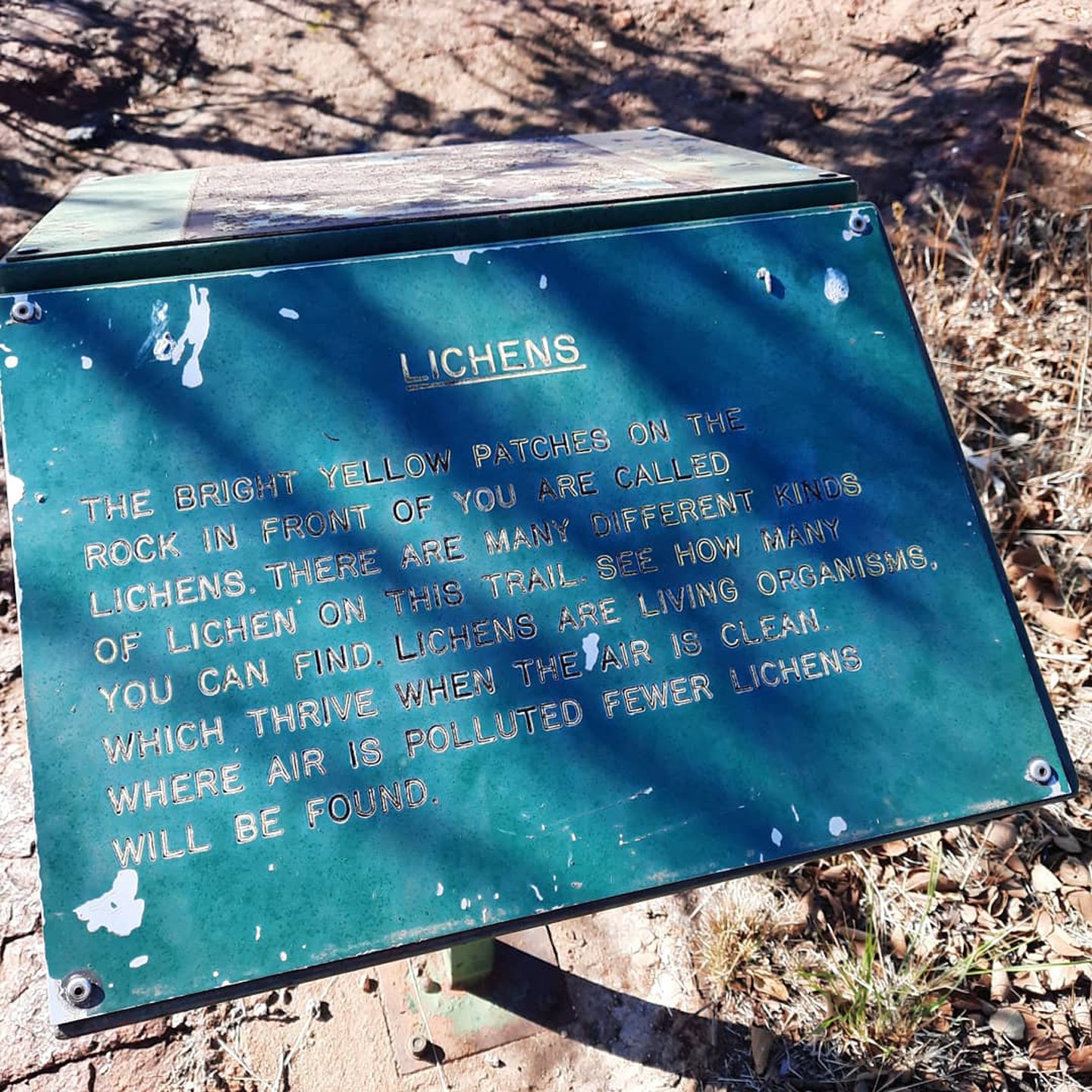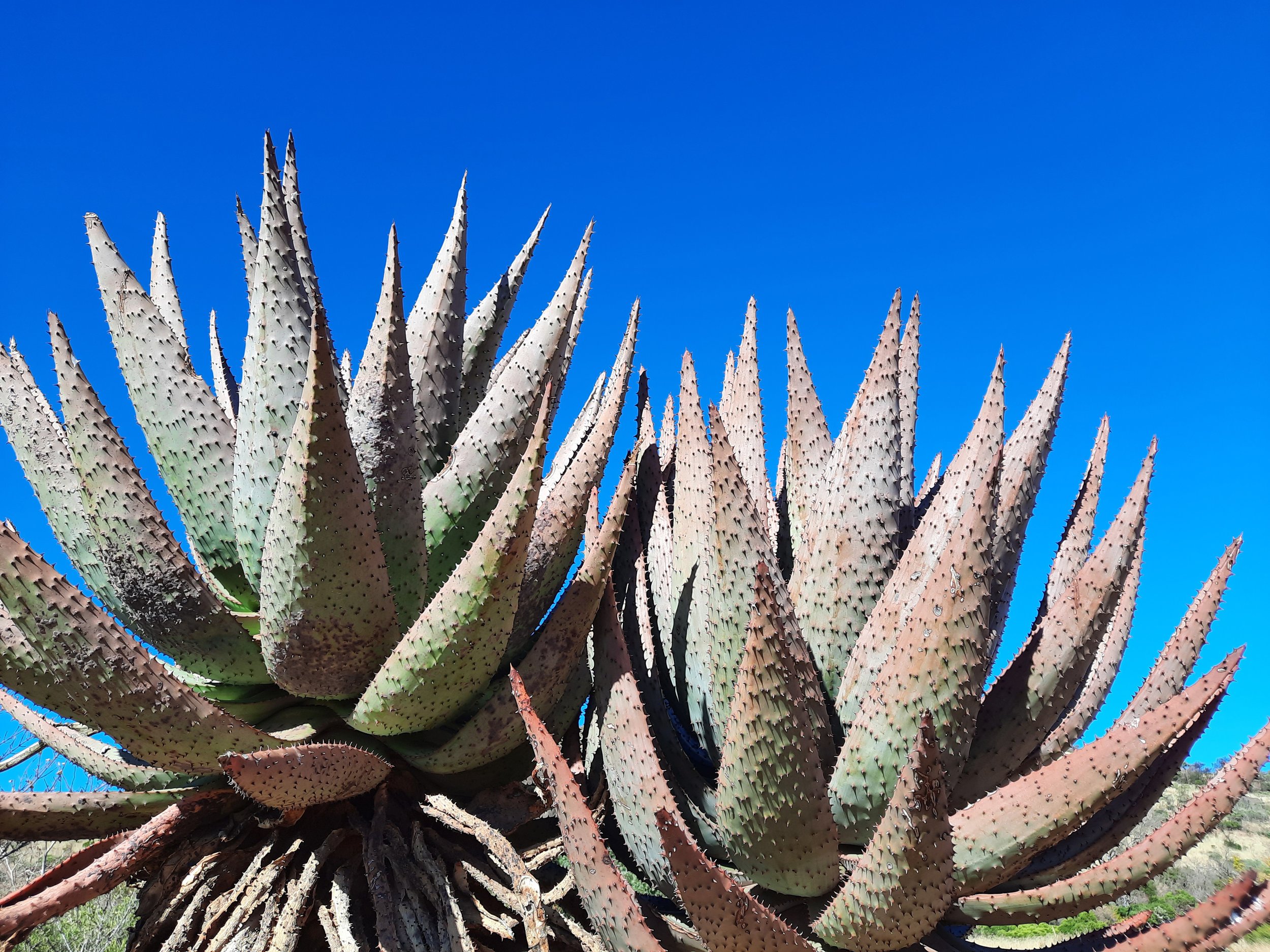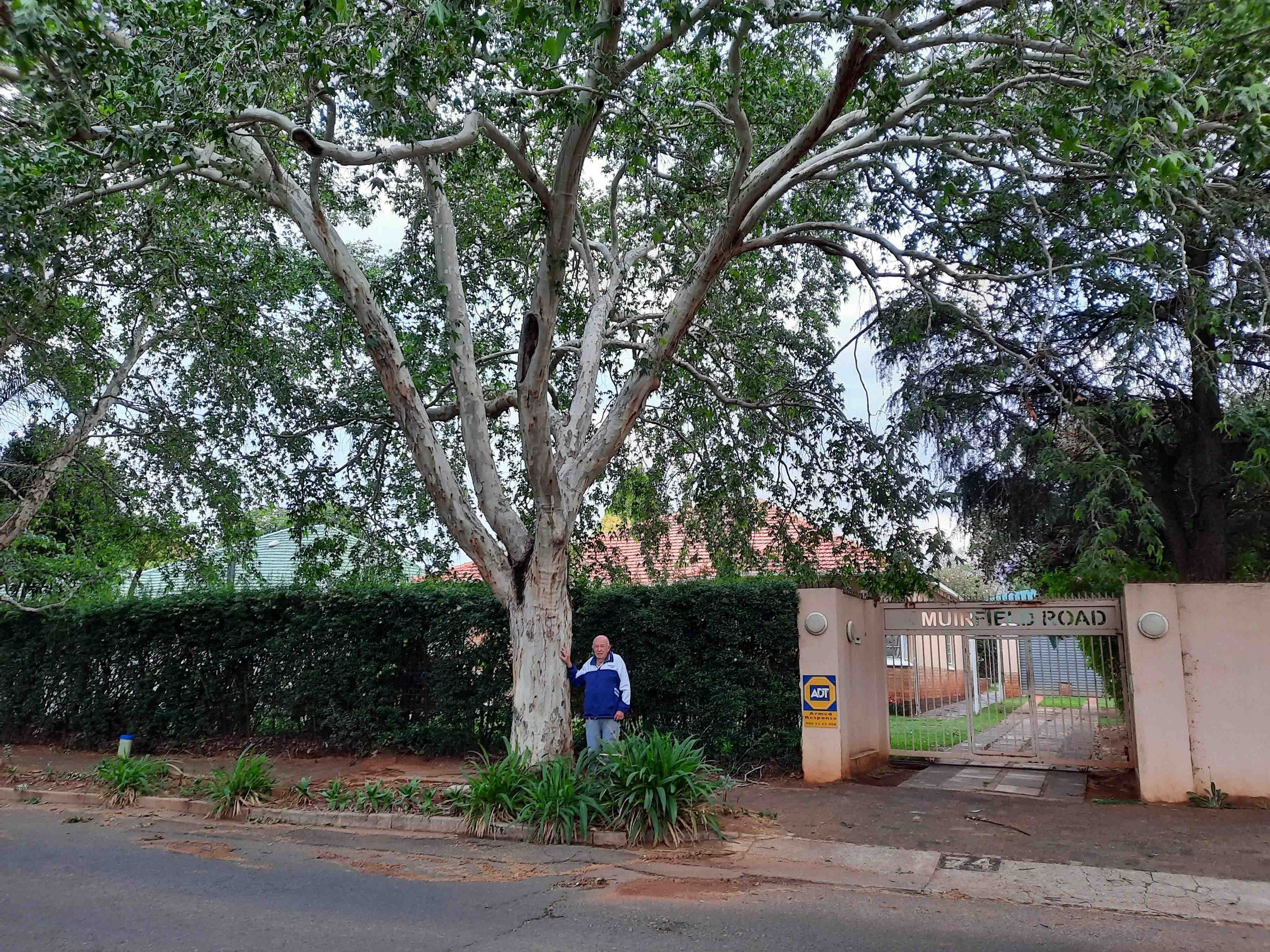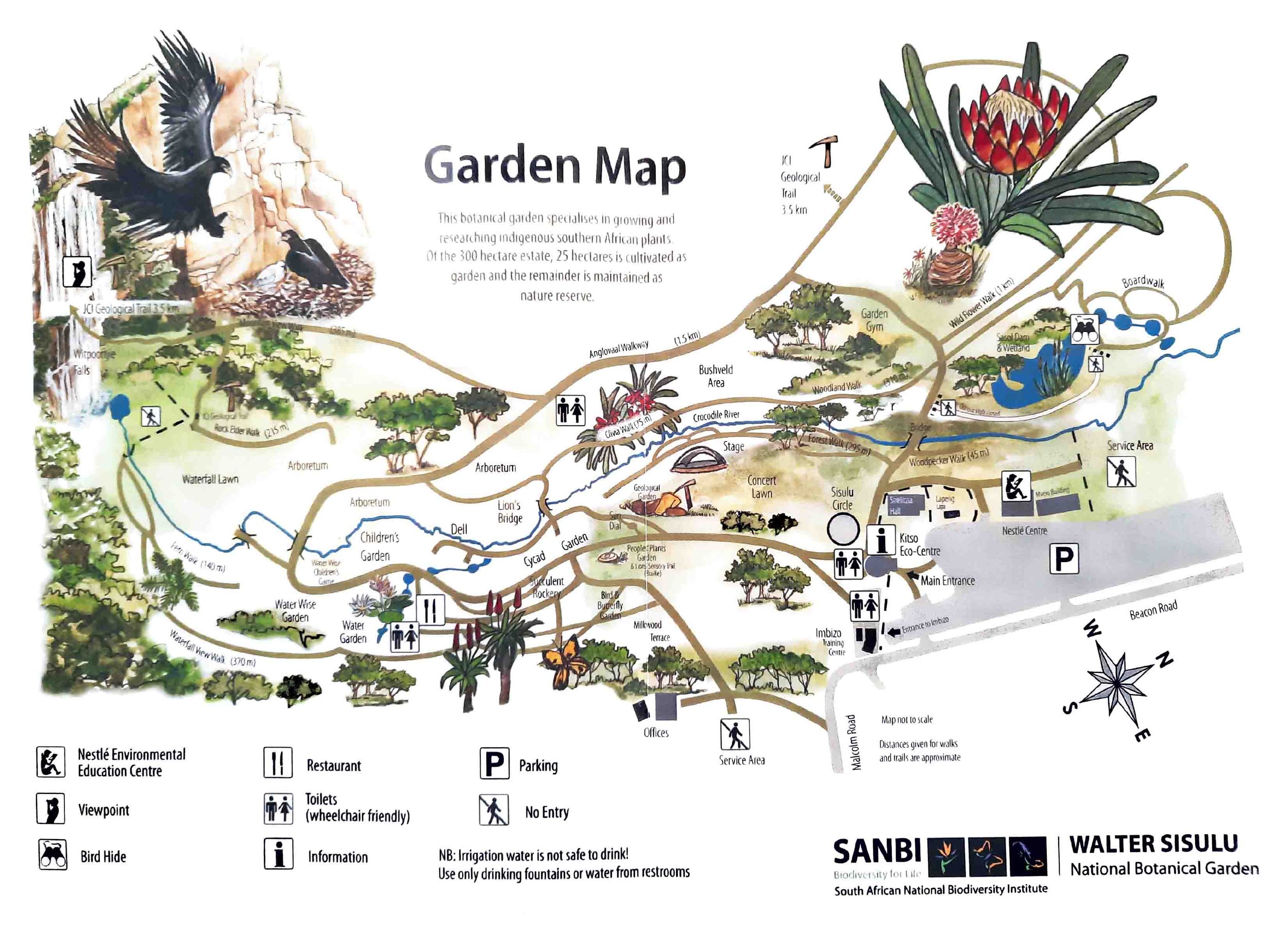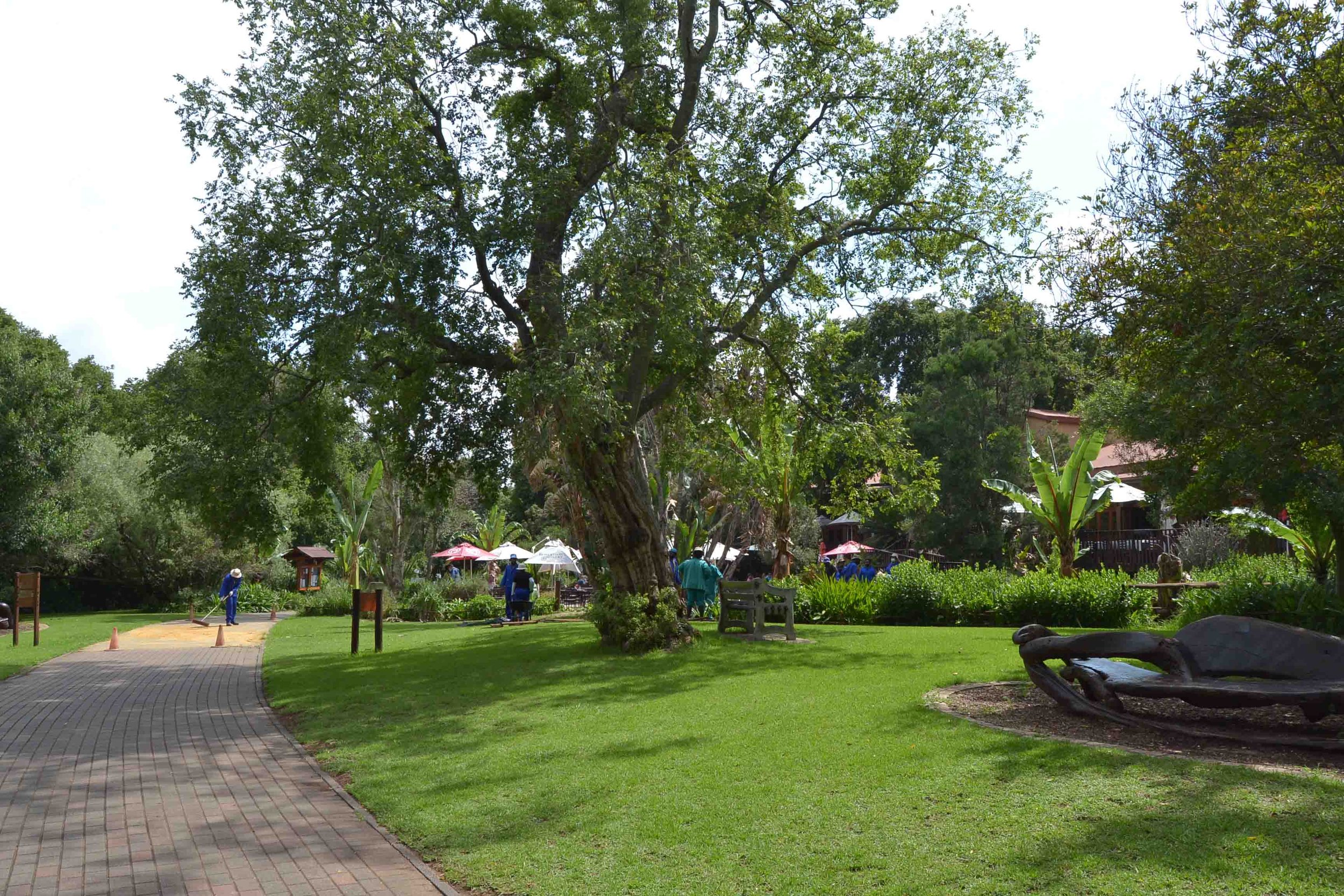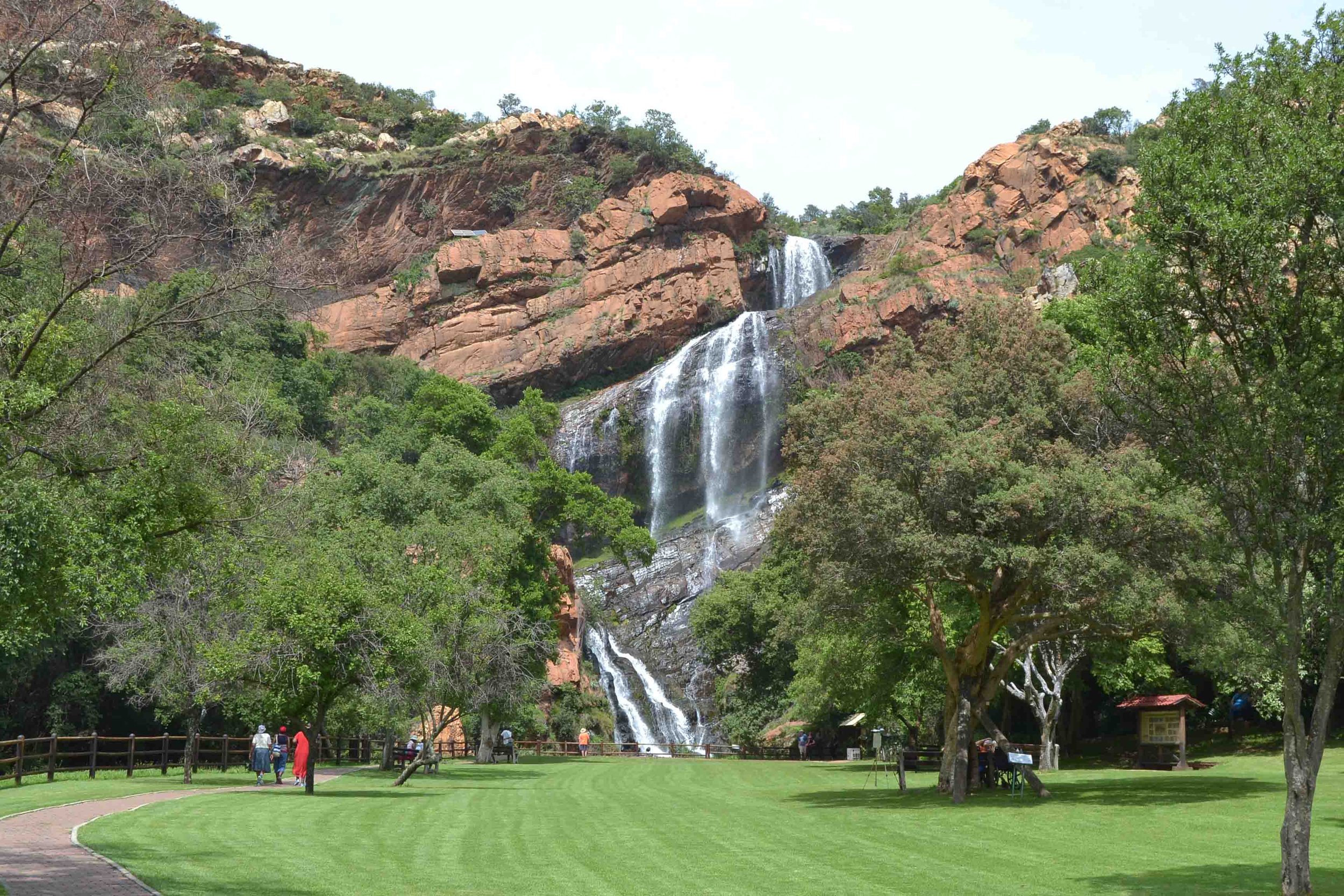Parkview Golfcourse
GS: And the Parkview Golf Course. Was that always there?
ML: Ja, that’s been there a long time.
GS: It’s been there long.
ML: One of the big features that… I was overseas for a while and I came back about ’85 and they all jumped on me to sign a petition. Apparently they were going to build a road down Bolton Road.
GS: Oh.
ML: It was going to go over the golf course and then come up Geers Avenue past the school and then go through some houses and then down and go past the wall and Emmarentia Dam and go out. It was a big east west expressway.
GS: Sho.
ML: But it never developed.
GS: Ja. Well thankfully because that would’ve not-
ML: It would’ve ruined Greenside.
GS: Ja definitely.
ML: It would affect the school as well because they have a sort of cement big highway going past the school.
GS: Ja. And anything else about the streets or like the space of the suburb because we’ve kind of spoken about the green spaces like the golf course and the dam. Are there other parks that you visited, maybe that Sir Lionel Phillips and Pirates? Did you spend time there?
ML: Well, the golf course, it had about an extra two holes that they’ve taken away.
GS: Oh really?
ML: And you know where the tennis courts are?
GS: Ja.
ML: And where the bowling green?
GS: Bowling club, ja.
ML: That was actually part of the golf course.
GS: Oh really?
ML: And then they took it away. That’s why you get that link road that goes… Do you know Link Road?
GS: No.
ML: You know if you go along… I forget that bottom road. The one below Gleneagles.
If you go down Link Road you’ll find about seven or eight houses at the bottom of Link Road. The funny thing is one of them’s on 12th Street. And if you look at Parkhurst you see 12th Street comes to the river and stops. And now you got a 12th Street in Greenside.
GS: And then it jumps the river. Oh wow.
ML: And then they never built a bridge to sort of link it up.
GS: Oh, I see.
ML: But that could’ve been one of the extensions of Greenside.
GS: Ja.
ML: But take a walk there sometime.
GS: Ja, I must go have a look. Sounds interesting.
ML: If you walk down Link Road they’re so surprised that you’re going down Link Road, you know what you coming down Link Road for because-
GS: No one goes there.
ML: It doesn’t go anywhere.
Pirates
GS: Okay. And Pirates has that been there for long. I don’t know about Pirates. Or that Lionel Phillips Park?
ML: Ja, the Lionel Phillips Park I think’s been going a long time. But Pirates I don’t know. You see, I don’t think it existed because I joined the Wanderers.
GS: Oh I see.
ML: And I don’t think Pirates was there at the time.
GS: Okay.
ML: I stayed at the Wanderers, but now the Wanderers is a too bit far for me to go now nowadays.
GS: Yes, what did you used to do, did you do running?
ML: Squash.
GS: Squash. Okay.
ML: Squash. Had a lot of friends that were mad about squash.
GS: Yes, oh cool.
ML: And the thing is that they had about six courts up there and used to be about a group of six of us and we used to go, so we occupied three squash courts.
GS: Oh nice.
ML: So if you went after half past nine at night, the bookings stopped like at half past nine, so you could play squash there.
Greenside Businesses
ML: Well the Greenside shops were maybe of interest. There was a butcher there.
GS: In Gleneagles Street?
ML: No in Greenway.
GS: In Greenway. Okay. .
ML: That Chemist has been there for years. It was run by a chap called Shovren. It was called Shovren’s Chemist. And there’s a cinema there called the Rex Cinema.
GS: Next to the pharmacy?
ML: Yes.
GS: Wow.
ML: That’s where that hairstylist is-
GS: Yes, the Carlton Hair Academy?
ML: If you look at it’s a peculiar shape building-
GS: Yes, did that used to be a… Okay, wow.
ML: And then opposite the cinema there was a sort of soda fountain where the people used to go during the break of the cinema and buy cold drinks and stuff.
GS: Sho. Ja and then… You said that there used to be two shuls, synagogues?
ML: No, the only one I know. Well this one down the road. That’s been there for years and the one in Emmarentia is a newer synagogue. But this one down in Greenside East has been there a long, long time.
GS: Yes, yes and when was the mosque built?
ML: Oh that’s very recent.
GS: Very recent, oh. And it’s interesting that there’s no church in Greenside.
ML: It was one of the conditions that the Geldenhuys’s laid down. That they cannot build a church in Greenside and they cannot have a pub in Greenside. It was one of the conditions that the ground was sold.
GS: Oh that’s interesting.
ML: So there’re no churches allowed in Greenside and no bars.
GS: So are there no churches in Emmarentia and Linden either because that was also part of the Geldenhuys land?
ML: I don’t know whether it followed through to… but it’s possible it did. That was a condition. So you know to balance it, no churches and no bars. It was one of the conditions.
GS: Oh okay, that’s interesting.
ML: Well that’s a good thing because we’ve never had a bar in Greenside, like you got a pub down in Parkhurst. But you know they seem to get around it by having off sales.
GS: Yes.
ML: And then there was a post office in Greenside, but it was on Greenfield Road.
GS: Okay.
ML: Later on they moved it up to Greenway.
Changes over time
ML: Well I tell you the thing that did change the suburb a lot is this Greenside High School because you started getting a lot of traffic down Muirfield road.
GS: Yes, yes, ja. I actually quite like hearing the kids walk past, down the street in the afternoon because it’s like a nice sound.
ML: But also the Greenside Primary’s changed a lot as well.
GS: Yes.
ML: It’s a lot of extra buildings on it now.
GS: Ja.
ML: When I was there, there was no school hall.
GS: Oh really, sho. They just started building it.
ML: There was no swimming pool.
GS: Wow. Have they got a pool now?
ML: Yes.
GS: So did your kids go to Greenside as well?
ML: Yes. All of them went to Greenside High.
GS: Greenside High and Greenside Primary?
ML: Yes.
GS: Oh they didn’t go to… You said you went to Parktown.
ML: Ja I went to Parktown but they had to go to Greenside.
GS: Oh, okay they went to…
ML: We could’ve tried to get them into Parktown maybe, but I don’t know… It’s a question of whether you go to a co-ed school or a…
GS: Yes.
ML: See my parents didn’t want me to go to a co-ed school. No, I don’t know, you see when they started Roosevelt it was a co-ed school and they didn’t want me to go to a co-ed school. They wanted me to go to an all boys school, can concentrate more if there’re no girls in the class.
GS: Ja, there’s still that debate.
ML: My brother automatically gave me access to Parktown Boys. So I was off to Parktown Boys no questions. But there was a boy the same age as me living next door and he went to Roosevelt and he was a founder member but that Roosevelt took a while to sort of get itself sorted out. There was a lot of trouble there.
first bus in greenside
ML: But I can remember the big event was when the first bus came to Greenside. It was a number 46 and they built that circle so the bus could turn around.
GS: Which circle? The one next to the golf course?
ML: No, where they’ve got the robots now. You know when you go down Greenway.
GS: Ja.
ML: There used to be a restaurant called The Circle.
GS: The Circle.
ML: And then there was a circle there.
GS: Oh.
ML: But now they got rid of the circle and they made a funny interchange there.
GS: Oh yes that one. Ja. Where was the circle?
ML: Where the robots are now at the bottom of Greenway.
GS: Oh.
ML: Opposite PostNet. Do you know where PostNet is?
GS: Oh, there where they’ve now done that upgrade at the carpet shop.
ML: That’s where the circle was.
GS: Oh okay and there was a restaurant called The Circle?
ML: Yes.
GS: And why was it such a big thing to have the bus come?
ML: Because I had to walk to Parkview to catch a tram into town. The only way to get into town was to walk to… Ja, you go across Chester Road and I think you go to Cardigan Road is it, I don’t know. Anyways you know the road that goes up to Parktown North?
GS: Ja.
ML: There was a tram there.
GS: A tram.
ML: And it went from Parktown North and it went down-
GS: Into town.
ML: And then it went past the Zoo Lake.
GS: Ja.
ML: Then it went up past the Zoo.
GS: Oh, okay.
ML: And then it went into town.
GS: Sho.
ML: So the only way without a car.
GS: Ja. So then when the busses came then you started going by bus to school?
ML: Ja, but the-
GS: Was that much easier?
ML: -bus service was so terrible. You had about a bus every hour something.
GS: Oh okay, wow.
ML: I remember the first bus was number 46 Greenside and I was so excited to see a bus coming to Greenside because you didn’t have to walk to the tram.
GS: Ja.
ML: Catch a tram into town.
GS: Sho. And is that where you did your shopping, in town? Like where did you normally-
ML: Well, I used to go with my mother because my mother couldn’t drive.
GS: Okay.
ML: So I used to go with my mother and we used to go to a place called Jensen Groceries or something.
GS: Where was that?
ML: Ag it was somewhere in town, I can’t remember, but I used to help her carry all her groceries to the tram and then bring them back here.
GS: Because there was probably no Checkers down the road.
ML: No, there was-
GS: No shop close by here.
ML: No, the only thing in Greenside from what I can remember was a butchery.
GS: Yes.
ML: And a chemist.
GS: Oh okay.
ML: And the cinema and a café.
GS: Okay, sho.
ML: And there was a grocer shop that was down on Greenfield Road, but he closed because the supermarket put him out of business.
GS: Oh, I see.
ML: But there was a grocer.
GS: Ja.
ML: I can remember going to the grocer.
GS: Sho.
ML: And I was about to buy something there and some women came and told me, “You know you can get that at half price at Checkers,” or something.
GS: Shame, so that’s why they closed. Shame. Ja, so thanks Mike, ja it was just basically to just hear a bit more about the suburb. It would be interesting also to hear from other people.
ML: It’s a pity that Craig Bruce, he died.
GS: Oh, yes.
ML: We used to play tennis with him.
GS: Oh, really.
ML: But he knew a lot more about Greenside than I did.
GS: Yes, ja.
ML: And he used to tell me a lot about Greenside.
GS: Oh really, ja. And just hearing like the memories of a place, of growing up here, what was significant, what was memorable, like the bus story is a great one.
ML: Ja, you see there was… Parkhurst had a lot of people who worked on lathes, artisans.
GS: Oh yes.
ML: And they used to go into town and work at places like Hubert Davies, so that’s why the Parkhurst service was far better than the Greenside service.
GS: Oh.
ML: And they used to go in early in the morning. You see I had to do vac work and I had to work at Hubert Davies and anyway. I had to be at Hubert Davies some unearthly hour, seven, half past seven in the morning.
GS: Sho.
ML: And there were no busses so I had to basically make use of the Parkhurst… I had to walk to Cardigan Road and catch a Parkhurst bus.
GS: Oh okay.
ML: Walk down… Because there were plenty of Parkhurst busses and hardly any Greenside busses.
GS: Sho.
ML: But the Greenside busses sort of started later so I couldn’t get into town in time.
Trees
GS: Ja, and then sorry just lastly with this nursery… is that why Greenside also has more trees, or like more unusual trees than maybe other suburbs or why do you think…
ML: I belong to this walking group.
GS: Ja.
ML: And this bloke walked along the Parkview Golf Course and he said the whole walk he’s seen about three indigenous trees. All the-
GS: All exotics.
ML: So basically what it turns out, some Englishman came here and he wants to be back in England, so that’s why those oaks up at avenue to that-
GS: To Greenside High School.
ML: Ja, well it was a farmhouse in those days. I think it was a farmhouse.
GS: Oh yes.
ML: And he thinks he was back in England and he wanted to come up a avenue of oak trees to his farmhouse, so he planted all these oak trees, but apparently that’s the sort of story.
GS: Sho.
ML: So the bloke says the people wanted to play golf in Parkview as though they were playing golf in England, they wanted to see all the same trees, so they imported trees and imported trees. You know the trees that grow in this country have got tap roots. These trees have got roots that spread out, that’s why all my paving’s lifting up because the roots go out horizontally.
GS: Ja, ja.
ML: But that’s a story I got out of him. They call them exotic trees and that causes a lot of trouble, because we used to walk at Delta Park and there was a avenue of what, cotton trees and it must’ve also been a road that went to somebody’s house but he says the seeds fall off and then they get washed down towards the river and then more trees come up close to the river. Eventually he says the river gets full of cotton seeds and then they start coming up in the river bed all the way-
GS: Down the-
ML: Ja and he says it’s a big headache.
GS: Sho.
ML: Especially the black wattle.
GS: Yes.
ML: It’s a weed.
GS: Ja, like there a lot of oaks and these plane trees but then I’ve seen like some unusual ones as well.
ML: It’s all Englishmen that brought the stuff out apparently.
GS: Oh yes.
ML: And most probably that’s why we’ve got plane trees because somebody I walked with that seemed to be, he must’ve had a degree in botany and zoology and what have you, but he seemed to know all about plants, because we were talking about clivias and he’s talking about clivias, where you’ve got to plant them and all the rest of it and he was going on, but he told me that these plane trees exactly the same as the plane trees in England or something. Because I said, we used to call them maple trees, but they not maple trees they plane trees. No, he corrected me.
GS: London plane, ja.
ML: He says it’s a London plane. No, he asked me, “Has it got a white bark?” I said, “Yes.” He said, “No that’s a London plane, it’s not a maple tree at all.”
importance of memory
GS: Oh, okay. And okay, so… Why do you think it’s important personally to remember and think about history and appreciate history of a place?
ML: Oh well I don’t know, I’ve had this question answered by other people. They say, have you ever lived without a memory?
GS: Okay.
ML: They say, “Living without history is like living without a memory.”
GS: So it’s good to-
ML: So history is a absolute necessity. That’s what they tell me. Some expert psychologist told me that story. So it’s true in a way.
GS: Ja.
ML: So you know if the history of Greenside was blotted out, you’d have no memory of Greenside. Same as if your memory was blotted out, you would forget all your school days and everything.
GS: Oh Okay. Ja, so those are all my questions Mike.
ML: What is this for? Is this a…
GS: No, I just want to write a blog on my website about the history of Greenside.
ML: Yes.
GS: Then I thought as part of my research I could… I’m struggling because I went to the Parkview Library and they’ve got a few booklets on the history of Parkview but it doesn’t… No mention of Greenside. And obviously Emmarentia’s got that whole Louw Geldenhuys history and… but there’s not really a lot of specific… like even this Rand Nurseries. Finding out more information about it, it’s very hard to come by.
ML: Look, I suggest you go and see John Carstens.
GS: Maybe.
ML: Because he knows a lot more than I know I think. You see that Melville Koppies might’ve been a part of the farm, I’m not sure.
GS: Yes.
ML: I don’t know whether it stopped-
GS: Yes, I think it is part of that original-
ML: I don’t know. You see, the farm might’ve stopped at Judith Road and Melville Koppies is something else.
GS: Ja.
ML: The other hand the Melville Koppies might be part of the farm, I don’t know.
GS: Ja.
ML: But the farm house is in Orange Road. It’s quite well known.
GS: Okay. Is that where Emmarentia lived? I think I’ve read a bit about that.
ML: Yeah that’s where the farm was.
GS: I think they read about that.
ML: There’s not much history-
GS: -I’ll write something up.
ML: -on Greenside.
GS: Ja.
ML: But you learn from history. Well, you should learn but… Okay, are you finished then?
GS: Ja, thanks so much Mike. Thanks very much for your time and, all the insights.




